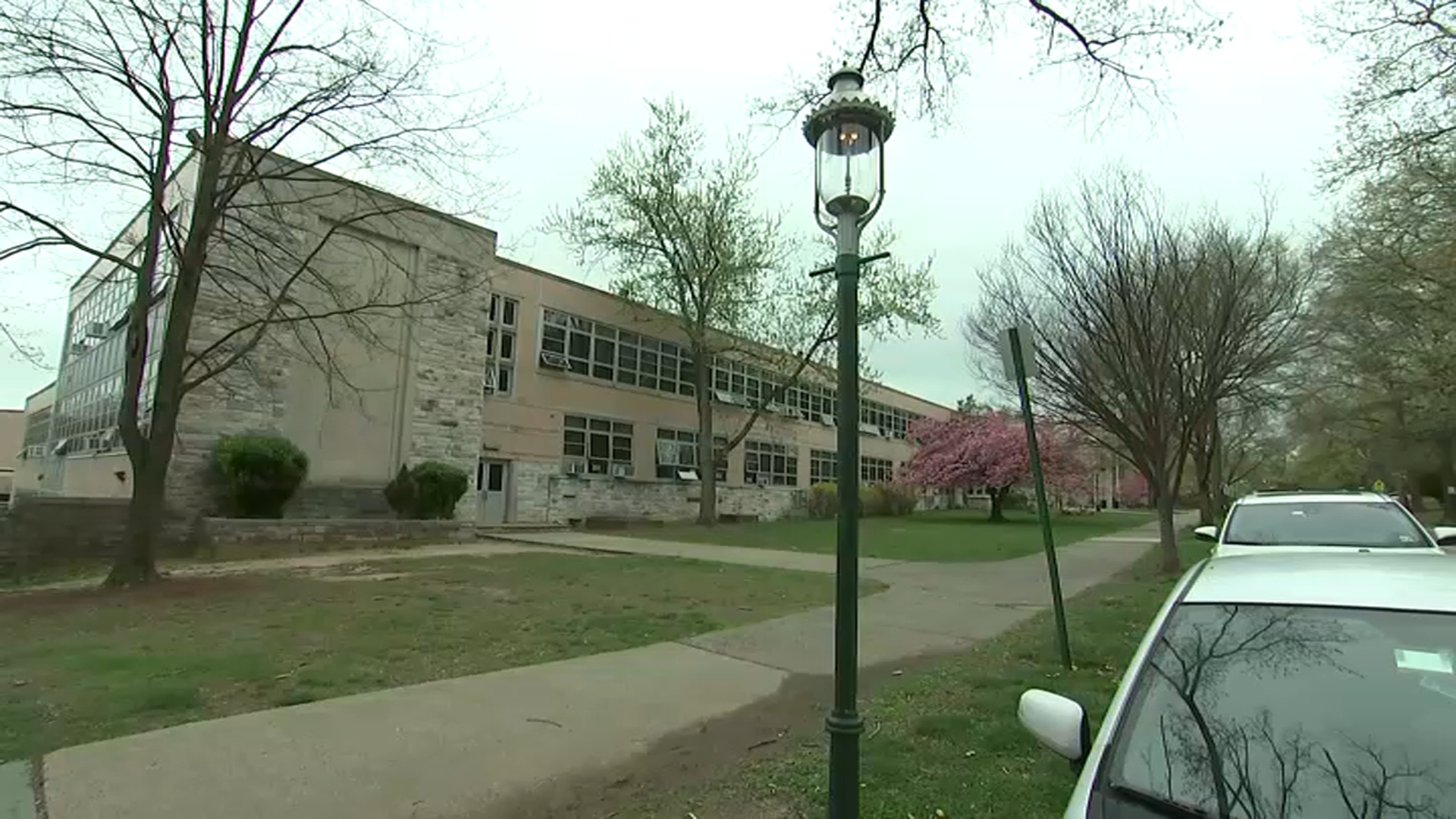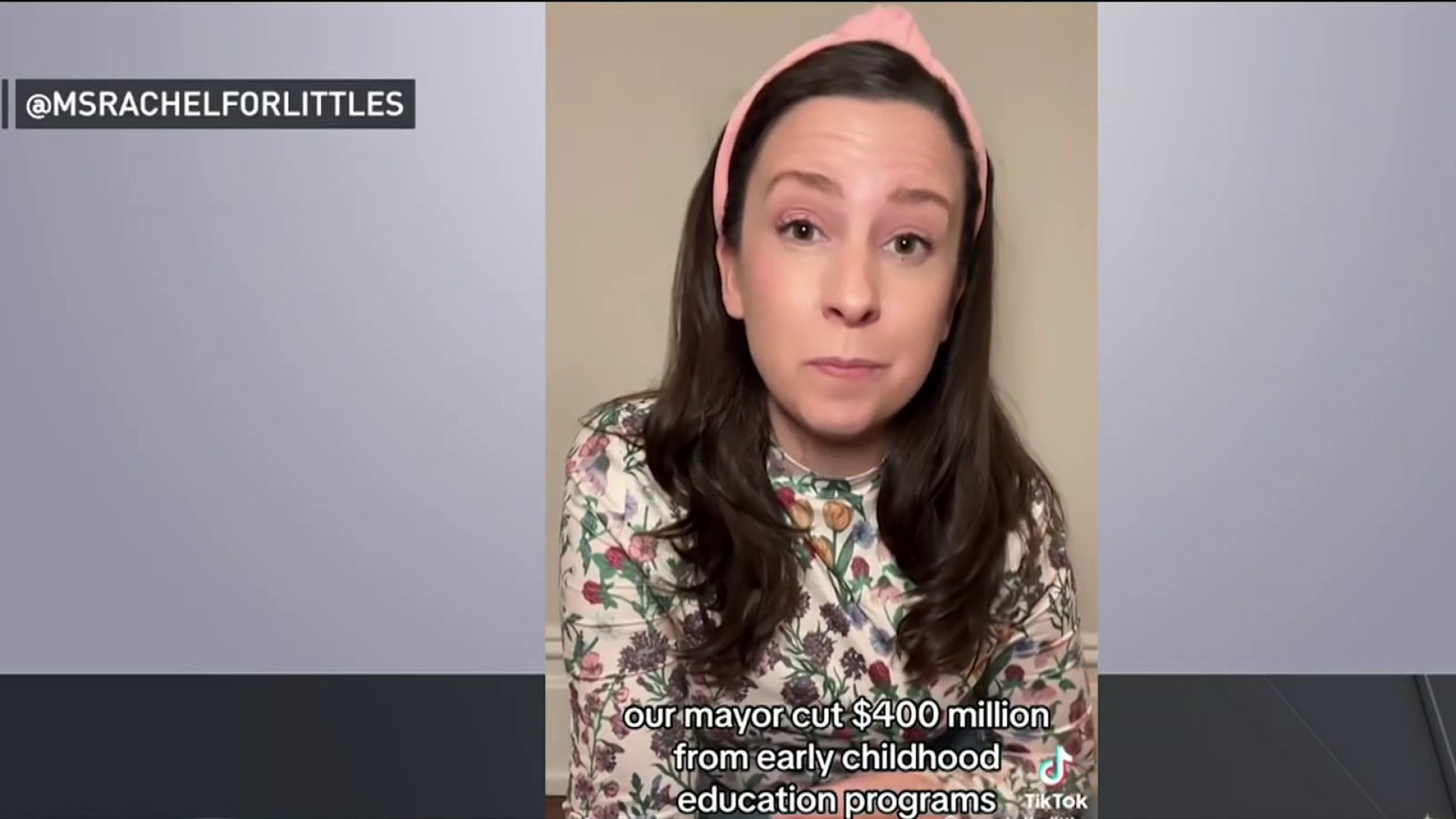What to Know
- COVID clusters in Brooklyn, Queens and Rockland and Orange counties continue to grow at a rate far outpacing the city and state average; Gov. Andrew Cuomo said reopening rollbacks are possible without improvement
- On Wednesday, the governor said the state's 20 hotspot ZIP codes hit a COVID-19 positivity rate of 5.5%, more than 5x the state average; the ones in Brooklyn and Queens are starting to affect the city's overall positivity rate
- The concerns come as indoor dining returns in New York City Wednesday for the first time in half a year; public schools also complete their staged reopening this week, welcoming about a half a million students in person
Gov. Andrew Cuomo issued his harshest rebuke yet of local governments in New York City, Rockland County and Orange County Wednesday, blaming their "incompetence" for burgeoning COVID clusters and warning, "Either you do the job or people will die."
"We know how to contain the infection rate. We're just not doing it with these clusters," the governor said in a telebriefing with reporters. "This kind of incompetent activity will cost lives. I'm not going to let it happen."
Right now, the state's 20 hotspot ZIP codes are averaging an infection rate of 5.5 percent — more than five times the statewide average, Cuomo said Wednesday. Those 20 ZIP codes account for 23 percent of new statewide cases despite representing just 6 percent of New York's population, he added. Rockland County posted the highest daily positivity rates of all New York counties Wednesday by far (6.5 percent).
At this point, the governor describes the problem as a "cluster problem," albeit the largest one he said the state has had to address since the one in New Rochelle in March, which marked the first "superspreader event" in New York for COVID-19.
"If you don't contain a cluster, a cluster turns into community spread," Cuomo said, warning short-term reopening rollbacks are possible if the state's overall infection rate starts to see serious upticks because of the various clusters.
News
"I spoke to leaders and we had a good conversation," the governor said. "The leaders of the community understand, and they're going to take action."
Daily Percentage of Positive Tests by New York Region
Gov. Andrew Cuomo breaks the state into 10 regions for testing purposes and tracks positivity rates to identify potential hotspots. Here's the latest tracking data by region and for the five boroughs. For the latest county-level results statewide, click here
Source: ny.gov
The governor's latest frustration comes a day after he ripped New York City officials, along with those in Rockland and Orange counties, in a fiery news briefing, blaming local governments for the clusters, which he says mark a failure of compliance and enforcement. Among other measures, Cuomo said local governments should increase mask enforcement with penalties.
That's part of the strategy Mayor Bill de Blasio is trying to execute in New York City, which resumed indoor dining Wednesday for the first time in more than half a year, a boon for long-struggling restaurant owners even as the ex-U.S. epicenter battles soaring infection rates in more than a half-dozen neighborhoods.
New York City COVID hospital admissions (87) and seven-day average daily cases (354) both hit September highs Wednesday, according to data Mayor Bill de Blasio revealed at his daily briefing. The daily positivity rate fell below 1 percent after topping 3 percent Tuesday for the first time in months, though the seven-day rolling positivity rate, which represents a fuller picture, ticked up a bit higher. Statewide, COVID hospitalizations have climbed back above 600, a 50 percent jump since the start of the season.
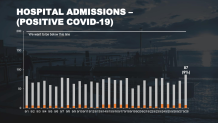
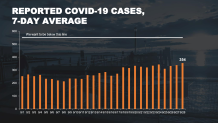
There are now ten ZIP codes being closely watched by the city's Department of health, with Fresh Meadows/Hillcrest (11366) being added Wednesday evening. The 14-day positivity rate there climbed to 3.08 percent, with all nine others even higher — some even nearing 7 percent.
Four of the other nine ZIP codes saw noticeable increases in positivity rates since the most recent update Monday. Two saw slight declines while another three remained nearly flat. All areas the city is now closely monitoring account for 25 percent of the city's positive cases over the last two weeks.
In addition to those neighborhoods, the Health Department said there are seven others that have shown increased growth in cases, and have test positivity between 2-3 percent. Six of those areas have seen increased percent of positive tests since the day before, the city said.
Compared with some parts of the country, these numbers are still relatively low -- and the city's overall infection rate remains one of the lowest in the nation. At the same time, de Blasio says the goal is to prevent the kind of surge that some other major cities have experienced -- at devastating cost -- over the last few months.
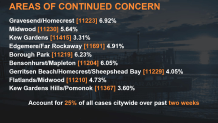
The state's most problematic ZIP codes include primarily Orthodox communities, and Cuomo said he met with those leaders Wednesday morning to discuss the importance of compliance and next steps. He described the conversation as productive and said the state would hold a follow-up discussion with them later in the day to devise a comprehensive action plan and means of carrying that out.
There were signs of progress when it comes to compliance. Jewish leaders in the Borough Park community were gearing up to hand out 400,000 masks in their area. In Forest Hills, mask compliance was near 100 percent at a kosher food pantry where they have been handing out 1,000 meals per week in the pandemic. In Rockland County, several yeshivas put out a new order that children should not been seen without a mask.
A day earlier, de Blasio described the Brooklyn and Queens clusters as cause for "extreme concern," announcing mask refusal fines effective immediately amid ongoing, targeted outreach efforts. Asked why he didn't implement more severe restrictions, like closing private schools and non-essential businesses, de Blasio said the city was reserving the right to evaluate the need for stronger steps -- but he warned more stringent ones may come Wednesday if the data warranted.
He didn't immediately announce new severe restrictions at his daily briefing Wednesday, saying it appeared intense communication and community outreach was showing some effect. Police presence and inspections are both stepped up, and while he didn't say whether the idea of closing schools in those areas has been broached yet, de Blasio said that the city will "watch if very carefully — daily, hourly — if at any point we need to close, we will, but based on facts it is not warranted."
The clusters are starting to affect the city's daily positivity rate overall, de Blasio said earlier this week. City data on that metric topped 3 percent Tuesday for the first time in months, though fell below 1 percent again Wednesday, while the state pegged it at 1.2 percent. That said, the seven-day rolling average positivity rate, which represents a fuller picture, ticked up to 1.46 percent Wednesday from 1.38 percent a day earlier.
If the city's seven-day positivity rate hits 3 percent, the mayor has said that would warrant the immediate re-closure of public schools citywide. Compliance with masks and social distancing may get even tougher starting Thursday too, as high schools and middle schools throughout the city are set to reopen their doors — adding another 800 school buildings that will have children inside for the first time since March.
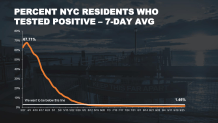
Up to 80 public schools located near or within the affected areas could be temporarily closed sooner if the cluster situation doesn't improve, given their proximity to the hotspot neighborhoods, officials said. The largest teachers' union once again put the city on notice: Fix the problem or the schools get closed.
"This is an inflection point. We have to take serious action and we will be escalating each day depending on what we see on the ground," de Blasio said, urging people in the affected ZIP codes to get tested to give a truer picture.
Areas of Concern
The cluster areas in Brooklyn, Queens, Rockland and Orange counties are primarily Orthodox communities. Cuomo said he planned to meet with Orthodox leaders in the most affected areas to discuss compliance and next steps, though hesitated to single out any particular group as exceedingly problematic.
“This is a concern for their community,” Cuomo said. “It’s also a public health concern for surrounding communities. And I’ve said from Day One, these public health rules apply to every religion. Atheists. It just applies to every citizen in the state of New York, period.”
In Rockland County, the primary areas of concern are Monsey and Spring Valley; in Orange County, its ZIP code 109250, while Cuomo cited Brooklyn ZIP codes 11219, 11210, 11204 and 11230 and Queens' 11367 as high infection rate areas.
The city's Department of Health provided an update on positivity rates Wednesday for the 10 key ZIP codes of concern. Four of them increased from the Department of Health's most recent update on Monday:
- Gravesend/Homecrest (6.90%)
- Midwood (5.62%),
- Kew Gardens (3.29%)
- Edgemere/Far Rockaway (4.74%),
- Borough Park (6.51%),
- Bensonhurst/Mapleton (6.31%),
- Sheepshead Bay (4.13%),
- Flatlands/Midwood (4.66%)
- Kew Gardens Hills/Pomonok (3.68%)
- Fresh Meadows/Hillcrest (3.08%)
There are seven areas being watched closely as well, six of which saw upticks from the previous report (Hillcrest/Jamaica Estates/Jamaica Hills being the only one to see rates go down):
- Rego Park (2.66%)
- Kensington/Windsor Terrace (2.79%)
- Brighton Beach/Manhattan Beach/Sheepshead Bay (2.97%)
- Williamsburg (2.06%)
- Crown Heights (2.30%)
- Bed-Stuy/Clinton Hill/Fort Greene (2.07%)
- Hillcrest/Jamaica Estates/Jamaica hills (2.69%)
While indoor dining does start Wednesday despite the warning signs, it could be shelved once again soon if the clusters turn into larger outbreaks, officials have warned. As it stands, restaurants can only open indoors at 25 percent capacity.
In addition to social distancing and mask-wearing, diners must agree to temperature checks and to submit contact tracing information to the restaurant. Tables must be six feet apart, and bar tops are closed for seating. The mayor reminded restaurants Wednesday to abide by the rules on capacity, personal protective equipment and other COVID precautions.
While indoor dining also resumed Wednesday in the hotspot ZIP codes, rigorous inspections will be conducted, the mayor said, and any issue could result in immediate summonses. De Blasio has said if the city's infection rate hits 2 percent over a seven-day period, indoor dining may have to be shelved while the city and state reevaluate.
Even with businesses being allowed to welcome back patrons for the first time in more than 200 days, some say that the costs for restaurants to guarantee a safe dining experience far outweigh the 25 percent limited capacity.
“We’re all a little apprehensive, but that was the case when we started outdoor dining, too,” said Samantha DiStefano, owner of Mama Fox, a restaurant and bar in Brooklyn.
Mama Fox can only seat 18 people inside at 2 percent capacity, so DiStefano will still rely heavily on her 14 outdoor tables. She thinks many New York restaurants won’t open indoor dining until the limit reaches 50 percent because they can’t cover their costs at 25 percent.
In the meantime, Mama Fox and others are trying to figure out how to extend the outdoor dining season using space heaters, tents, temporary igloos and even blankets. Heat lamps are already in short supply.
Cuomo said that there are no immediate plans to roll back indoor dining, it could become an option if the problems are not addressed.
"Do step one first. Enforce compliance, issue a ticket," the governor said. "If that doesn't work, yes more serious actions."
While indoor dining is back on the menu for the city, on Wednesday it appeared that many throughout the five boroughs still opted to enjoy their meals outdoors — something that may change when the weather stops being as pleasant.
Steve Nikolakakos closed one of his three Manhattan restaurants because his landlord wouldn’t give him a break on the rent. Another, Gracie’s Diner, closed for two months in March after two employees died of the coronavirus.
Even with outdoor seating, the diner is only making 65 percent of what it did before the pandemic, he said. Still, that’s better than May, when he was doing only 30 percent of his usual business.
“This is the worst thing I have ever seen,” said Nikolakakos, a 40-year veteran of the industry.
Il Carino, a tiny Italian restaurant in Manhattan, is reopening its dining room with just 12 seats. Outdoor seating has recaptured only about 30 percent of the restaurant’s business, and it has had to lay off 13 workers, said Giolio Alvarez, the restaurant’s manager.
Alvarez said customers are asking for heat lamps, but the restaurant doesn’t know if they’re worth the extra money. And increasing menu prices is off the table.
“How are we going to increase prices?” he said. “Everyone is broke.”

